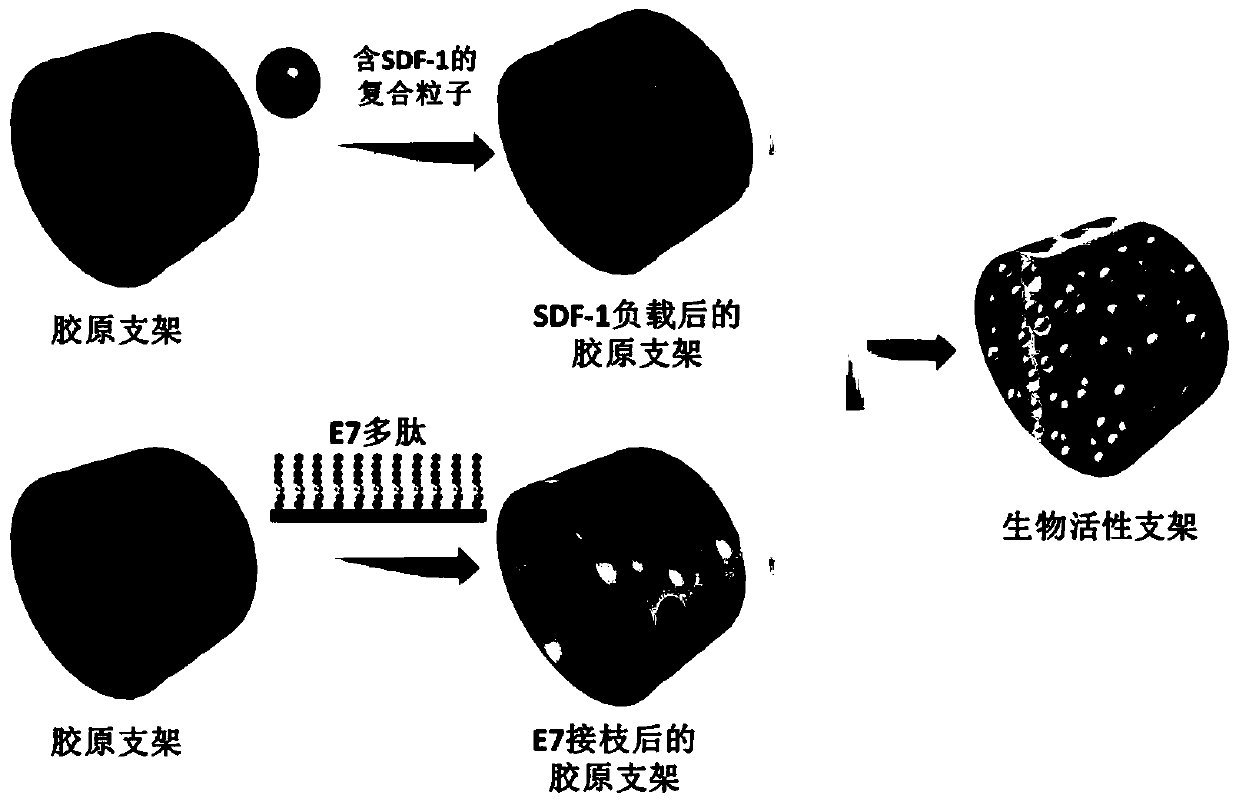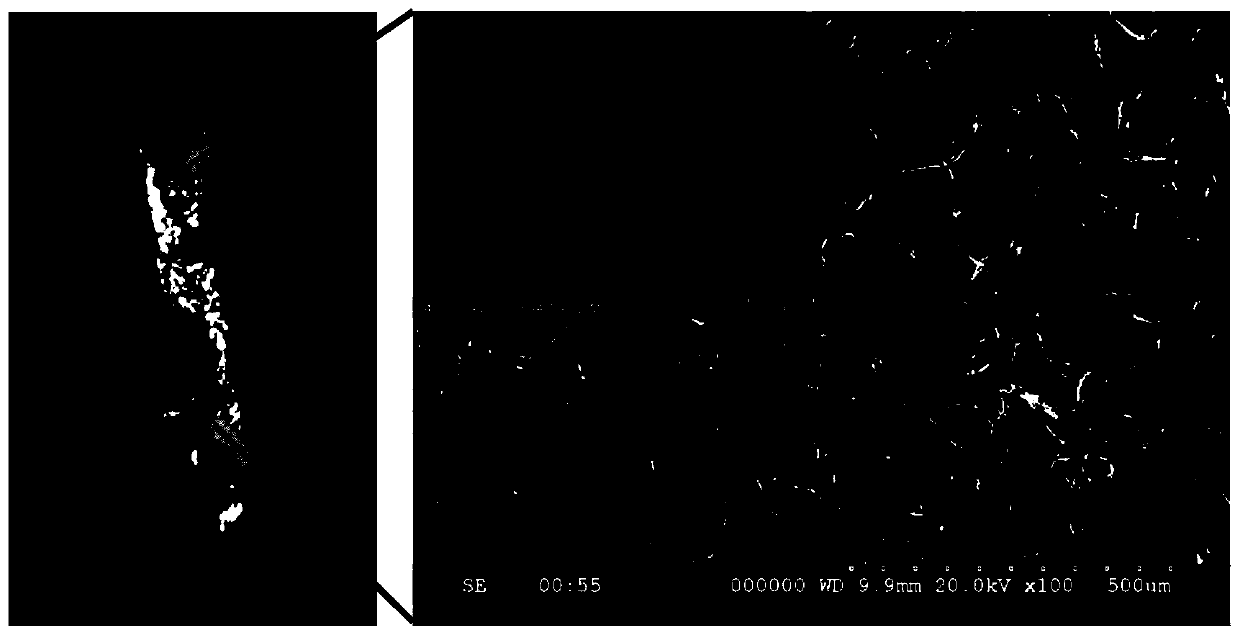Bioactive scaffold for repairing endometrium and improving fertility
A bioactive, collagen scaffold technology, applied in medical science, prosthesis, etc., can solve the problems of difficult to restore endometrial physiological functions, easy re-adhesion, etc., and achieve the effect of improving fertility and repairing endometrial structure
- Summary
- Abstract
- Description
- Claims
- Application Information
AI Technical Summary
Problems solved by technology
Method used
Image
Examples
example 1
[0022] (a) Preparation method of SDF-1α sustained-release particles with recruitment function
[0023] The SDF-1α sustained-release particles are formed by electrostatically complexing negatively charged sulfonated chitosan, slightly positively charged SDF-1α and positively charged polylysine.
[0024] Sulfonated chitosan is prepared by using chitosan as base material and chlorosulfonic acid as sulfonating reagent. First, 9 g of chitosan, 15 mL of dichloroacetic acid and 150 mL of formamide were thoroughly mixed in a beaker to fully swell the chitosan. Afterwards, 150 mL of anhydrous DMF was placed in a 500 mL three-neck flask, stirred in an ice bath, and 30 mL of chlorosulfonic acid was slowly added dropwise therein. Afterwards, the fully swollen chitosan was added into the three-necked flask, and reacted at 60° C. for 2 hours. After the reaction, a small amount of deionized water was added to neutralize the chlorosulfonic acid, the precipitate was centrifuged, and the supe...
PUM
 Login to View More
Login to View More Abstract
Description
Claims
Application Information
 Login to View More
Login to View More - R&D
- Intellectual Property
- Life Sciences
- Materials
- Tech Scout
- Unparalleled Data Quality
- Higher Quality Content
- 60% Fewer Hallucinations
Browse by: Latest US Patents, China's latest patents, Technical Efficacy Thesaurus, Application Domain, Technology Topic, Popular Technical Reports.
© 2025 PatSnap. All rights reserved.Legal|Privacy policy|Modern Slavery Act Transparency Statement|Sitemap|About US| Contact US: help@patsnap.com



